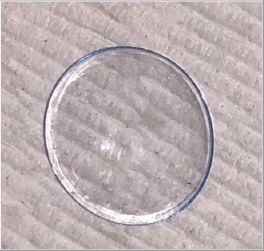MiSight 1 Day (omafilcon A) Soft (Hydrophilic) Contact Lenses for Daily Wear - P180035
Product Name: MiSight 1 Day (omafilcon A) Soft (Hydrophilic) Contact Lenses for Daily Wear
PMA Applicant: CooperVision, Inc.
Approval Date: November 15, 2019
Approval Letter: Approval Order
The U.S. Food and Drug Administration (FDA) is providing a brief overview of information related to the approval to market this product. This information, along with information from your doctor, can help make you an informed participant in your health care.
What is it?
MiSight 1 Day (omafilcon A) Soft (Hydrophilic) Contact Lenses for Daily Wear are intended to slow the progression of nearsightedness in children ages 8-12. Additionally, the contact lenses are intended for vision correction of nearsightedness. The contact lenses are worn on the eye every day and discarded each day after every use. The use of this contact lens requires periodic eye doctor's visits and a prescription.
What Are the Benefits?
MiSight 1 Day (omafilcon A) Soft (Hydrophilic) Contact Lenses for Daily Wear slow the progression of nearsightedness over time. Additionally, the contact lens improves a child's ability to see things from far away, in a way similar to glasses
What Are the Potential Risks and Adverse Events?
MiSight 1 Day may cause swelling or infection of the eye. Refer to the labeling for a complete list of potential risks.
Note: The risk information provided on this page is not meant to replace a discussion between patients and their health care provider.
When Should It Not Be Used? (Contraindications)
The contact lens should not be used in children with any of the following:
- Swelling or infection of the eye
- Eye disease, injury, or abnormality that affects the eye surface or eyelids
- Severe lack of tearing (dry eyes)
- Numbness of the eye surface
- Disease that may affect the eye or worsen by wearing contact lenses
- Allergic reactions involving the eye or the skin surrounding the eye that can be triggered or made worse by wearing contact lenses or use of contact lens solutions
- Active eye infection
- Eyes become red or irritated
- Inability to follow contact lens handling and lens wear instructions or unable to obtain assistance to do so
Detailed Product Information
For Patients
For Health Care Providers

